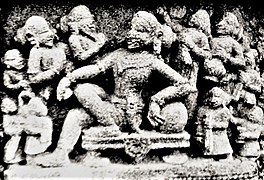| Anangabhima Deva III | |
|---|---|
| Rauta, Durgaputra, Rudraputra, Purushottama, Purushottamaputra | |
| Reign | 1211–1238 CE |
| Predecessor | Rajraja Deva III (Father) |
| Successor | Langula Narasimha Deva |
| Spouse | Somala Devi, Kastura Devi, etc |
| House | Eastern Ganga Dynasty |
| Mother | Malhanadevi (Eastern Chalukya princess) |
| Religion | Hinduism |

Anangabhima Deva III was an Eastern Ganga monarch who ruled an early medieval Odisha-centered empire in eastern India from the year 1211 to 1238 CE. He maintained a large territory that stretched from the river Ganga in the north to Godavari in the south. He had defeated the Kalachuris on the western frontiers of the empire and established a matrimonial alliance with them. His brother or brother-in-law, Rajaraja II, became the ruler of the dynasty in 1198. When Anangabhima III came into power in 1211, he expelled the Muslims of Bengal from his kingdom. He had a son, Narasingha Deva I, who invaded Bengal in 1244 and captured the capital city, Gauda.[1] He was a reformist in the social and spiritual structure of the Odia society as he declared Lord Jagannath as the supreme ruler of his empire and himself a servant (Rauta) under him.[2] The Madala Panji chronicles depict him dedicating everything to lord Jagannath. He built the famous Pradaskhina mandapa of Srikurmam temple.[3]
- ^ "Ganga Dynasty, Encyclopædia Britannica.". Britannica. Retrieved 3 April 2012.
- ^ Origin & Antiquity of the Cult of Lord Jagannath. Oxford: Oxford University Press. 2011. p. 20.
- ^ "Kings Without a Kingdom: The Rajas of Khurda and the Jagannatha Cult" (PDF). www.core.ac.uk. 29 November 2019. pp. 62, 63. Archived from the original (PDF) on 28 November 2019. Retrieved 29 November 2019.